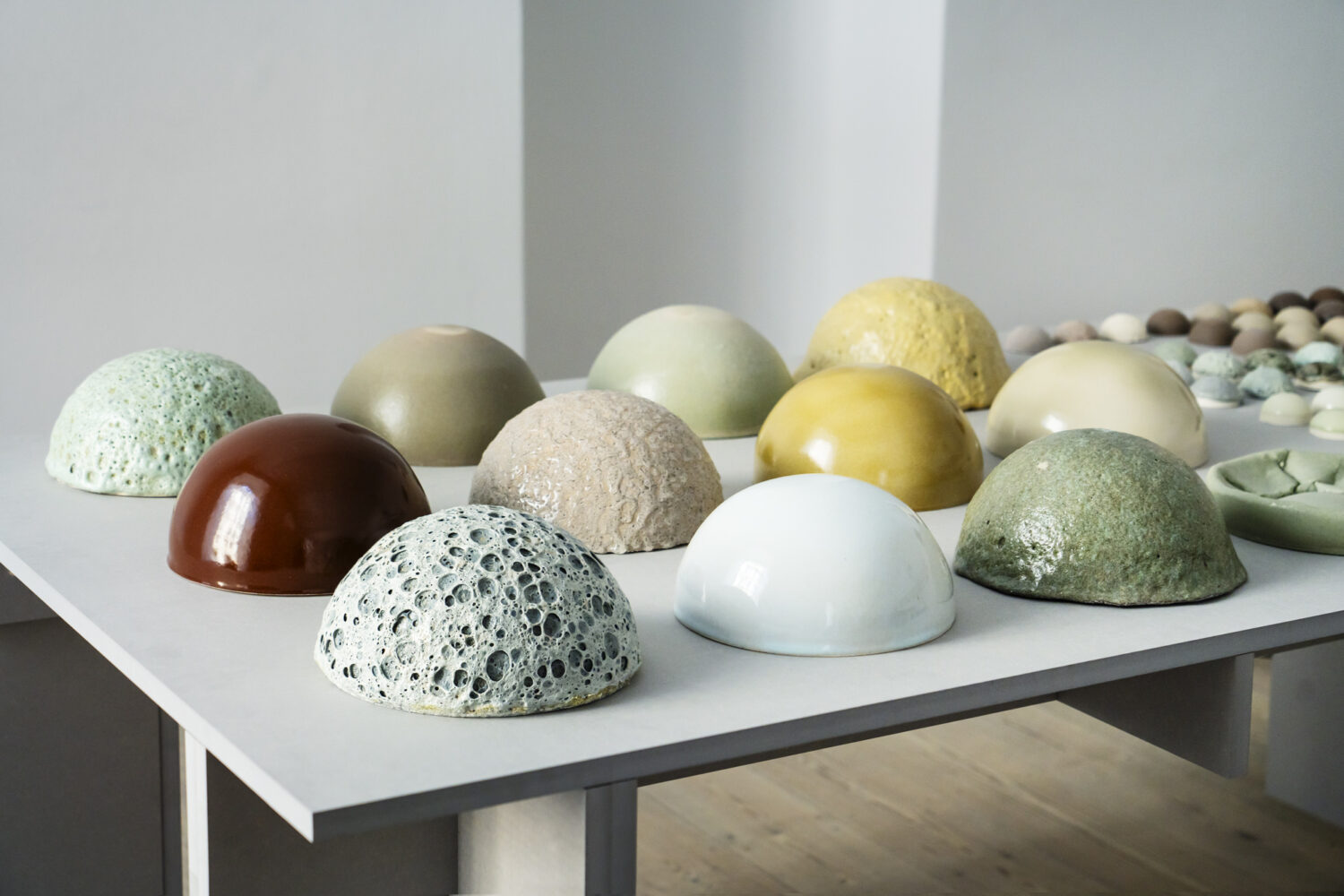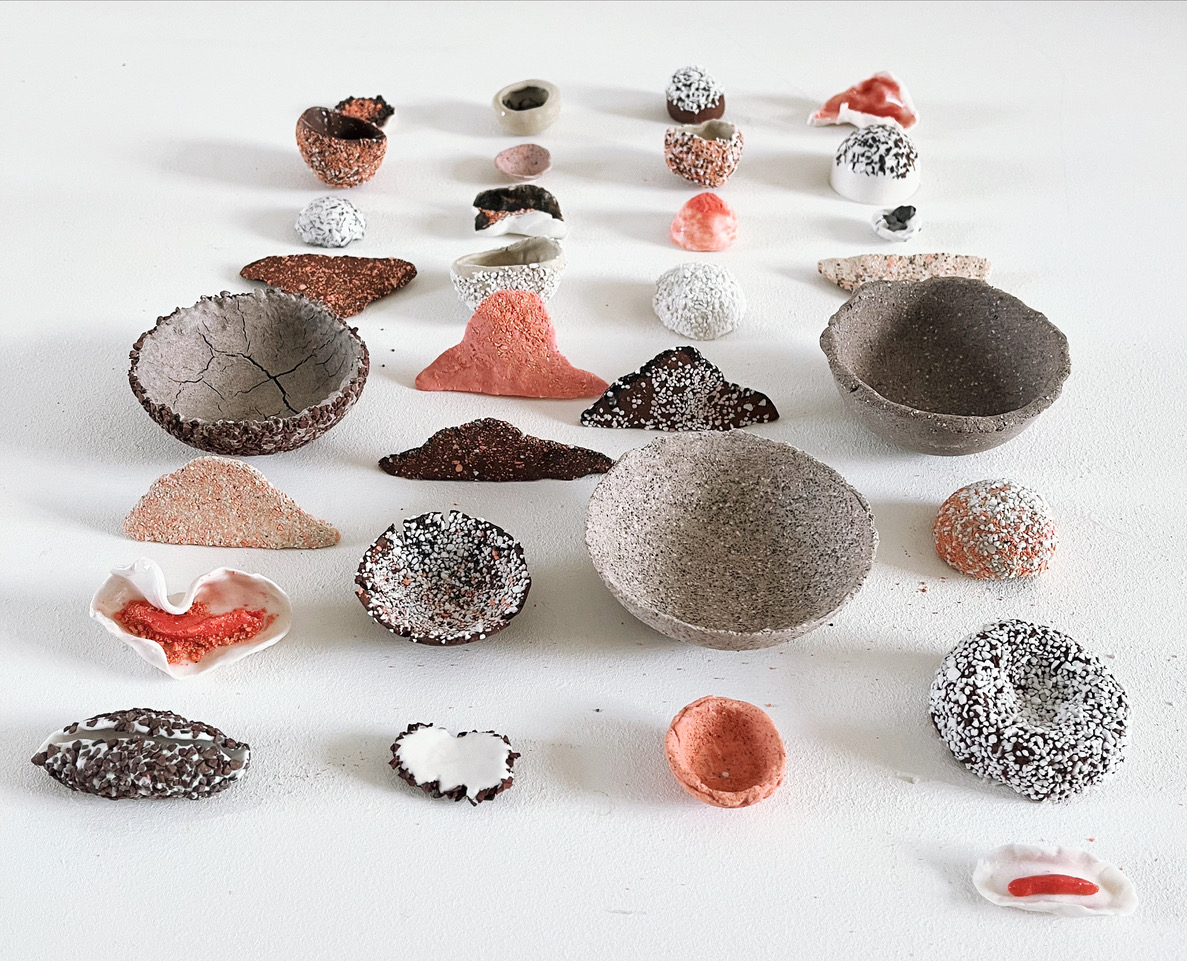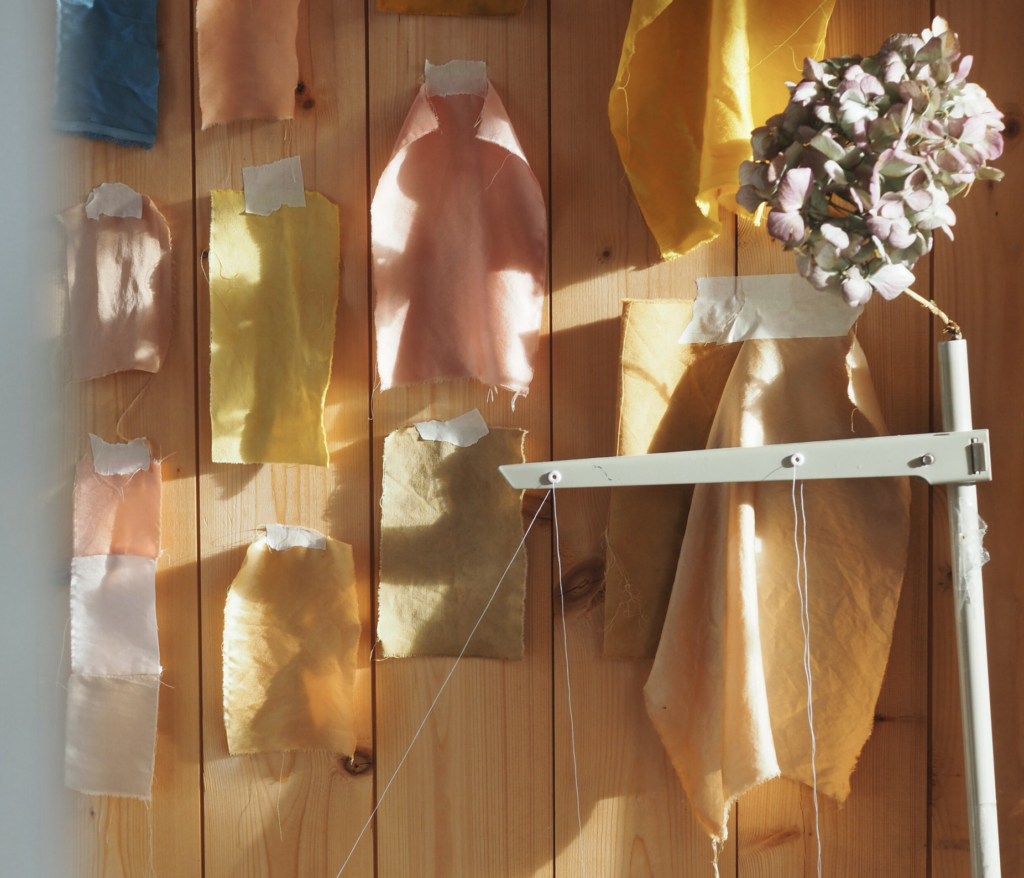Sometimes you can be moved by the thought and care that designers and craft artists put into making the world a better place. For example, by conserving resources.
Recently, the Danish Architecture Centre presented interesting design solutions by the winners of the Danish Design Awards 2024, and just recently an exhibition opened in Officinet with the ambiguous title Ødeland (‘Wasteland’), where the exhibited objects are an expression of everything other than wasting materials or leaving the planet as a… wasteland. The exhibition is about rethinking the way we use resources to make ceramics.
Behind the exhibition are three ceramicists, Christina Schou Christensen, Signe Fensholt and Thora Finnsdottir, who individually and in a joint project show the results of attempts to reduce material consumption in the production of ceramics.

The three craft artists have taken as their starting point the paradox that on the one hand there is a perceived scarcity of the materials – clay and minerals extracted from underground – used to make ceramics. As a text presented states:
‘We are already realising that there are raw materials that we can no longer obtain and thus that finely adapted recipes can no longer be used.’
On the other hand, according to the exhibition concept, ‘huge amounts of ceramic waste: tiles, pots, plates, toilets and bricks are being dumped’. Large amounts of glass are collected through the waste sorting system, but not all types. And even though we have become better at recycling construction waste in renovations and new construction, for example, there are still waste products. This is what the three ceramicists use in the works on display in the Officinet, and there is no doubt that in the future we will need even more designers and architects to come up with even more sustainable and resource-saving solutions.

The exhibition is organised in such a way that each of the three artists has a table with objects and a wall with bowls. Together, the works show the rich possibilities – aesthetic, material, here and there also functional – of recycling waste. The waste – melted glass, for example – can even be used to decorate dishes, for example. The many objects form a wealth of shapes that can be both decorative and humorous. The individual works also become a library of opportunities to turn scrap into treasures.
They have succeeded in organising an exhibition that combines pedagogy and point.
Sometimes things go wrong when exhibitions are curated with an overly didactic approach. The result can be almost overwhelming. But in ‘Ødeland’, the narrative is extremely successful. With examples of fragments and pulverised materials processed in different ways as a prerequisite for the final result, it is possible to understand the process of the three potters.
Furthermore, the exhibition – and the project in general – is accompanied by a website called ødeland.dk. On the website, the artists share their experiences – recipes – about the processes they have experimented with. Because what is the perspective of this exhibition? That others will also start working with discarded ceramics as a material to reduce resource consumption.
The perspective is that this reuse for artistic purposes can not only be realised by other ceramicists. It can also be done on a large scale, and an introduction at the exhibition shows that Christina Schou Christensen, Signe Fensholt and Thora Finnsdottir have partnered with the municipal waste sorting organisation on Bornholm. On Bornholm, 380 tonnes of ceramic waste must be disposed of every year. Much of it is already used in recycling projects. But there is also plenty of material for vases, sculptures and decorative objects such as the ones on display in Officinet.

About the Exhibition
Ødeland is created by Christina Schou Christensen, Signe Fensholt and Thora Finnsdottir.
Exhibition period: 7-29 March 2025.
Gallery: Officinet, Bredgade 66, 1260 Copenhagen K.
Further Reading
Theme: Scenes of crafts
The arts and craft industry is calling for an art centre dedicated to contemporary crafts and design. With this theme, Formkraft focuses on craft exhibition spaces and curators. What is the importance of small and large venues? Who curates craft artist and design exhibitions? How do the craft artists themselves get out of the limelight?

GenJord – Sustainable Ceramic Practice
The GenJord (literally: re-earth) project has sparked huge interest among ceramic makers and artists, both in Denmark and abroad. In this article, ceramic artist and project head Helle Bovbjerg presents the ideas behind the project, which has developed into a movement for a more sustainable ceramic practice.
Read article

The sustainable object: a celebration of the raw and changeable
The most sustainable design object is raw, changeable and unfinished. That may sound like an odd opening to an article on sustainability, as sustainability is often associated with durability and a long life-span, perfection and strength. Nevertheless, it is my theory that the most sustainable object is changeable, unfinished and, yes, raw. I will return to the notion of sustainable rawness later – first, let us take a look at the volatile, unfinished quality that characterizes the sustainable object.



